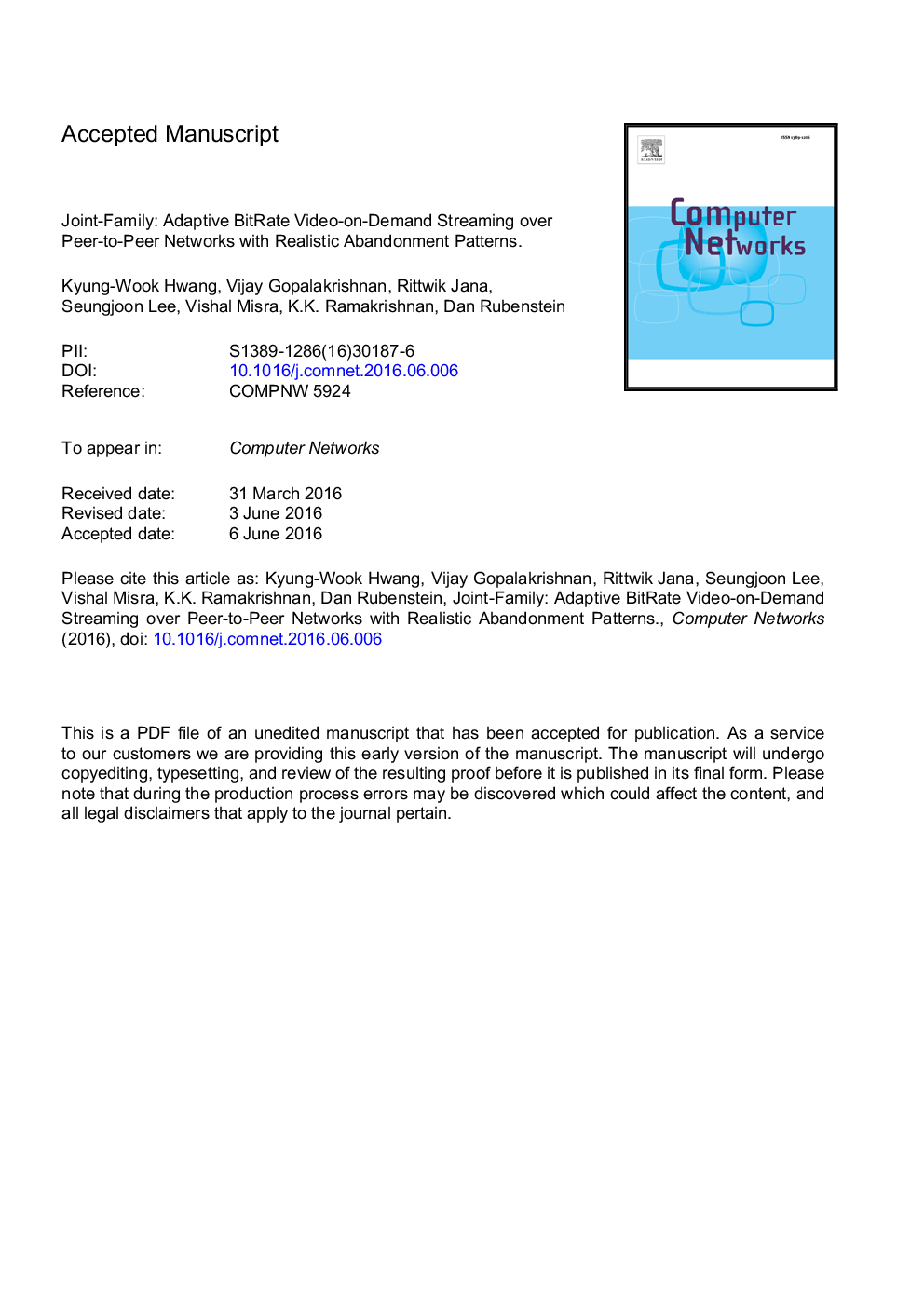| Article ID | Journal | Published Year | Pages | File Type |
|---|---|---|---|---|
| 6882925 | Computer Networks | 2016 | 20 Pages |
Abstract
Previous studies of peer-to-peer (P2P) video-on-demand (VoD) are performed separately from studies utilizing adaptive bit rate video since the techniques seemingly tackle orthogonal goals. Additionally, previous policies used by P2P VoD do not account for viewer abandonment of video during download and playback. Through analysis, we show that the popularity of a P2P swarm and seed staying time significantly affects the achievable per-receiver download rate. Specifically, we identify conditions under which popularity affects swarm efficiency, contradicting a typical misconception in previous work, and we show that abandonment under these previous policies significantly increases playback interruptions. In light of these observations, we propose Joint-Family, a protocol that supports HTTP-based adaptive bitrate streaming for on-demand videos using P2P techniques. Joint-Family accounts for user video viewing behavior, such as abandonment, to improve the quality of experience for the viewer. Peers in Joint-Family simultaneously participate in multiple swarms to exchange chunks of different bitrates. Joint-Family takes advantage of abandonment by converting peers to “partial seeds” to increase system capacity. Joint-Family adopts chunk, bitrate, and peer selection policies that minimize occurrence of interruptions in the presence of abandonment while delivering high quality video and improving the total capacity of the system. Using traces from a large-scale commercial VoD service, we compare Joint-Family with existing approaches for P2P VoD and show that viewers in Joint-Family enjoy higher playback rates with minimal interruption, irrespective of video popularity.
Keywords
Related Topics
Physical Sciences and Engineering
Computer Science
Computer Networks and Communications
Authors
Kyung-Wook Hwang, Vijay Gopalakrishnan, Rittwik Jana, Seungjoon Lee, Vishal Misra, K.âK. Ramakrishnan, Dan Rubenstein,
